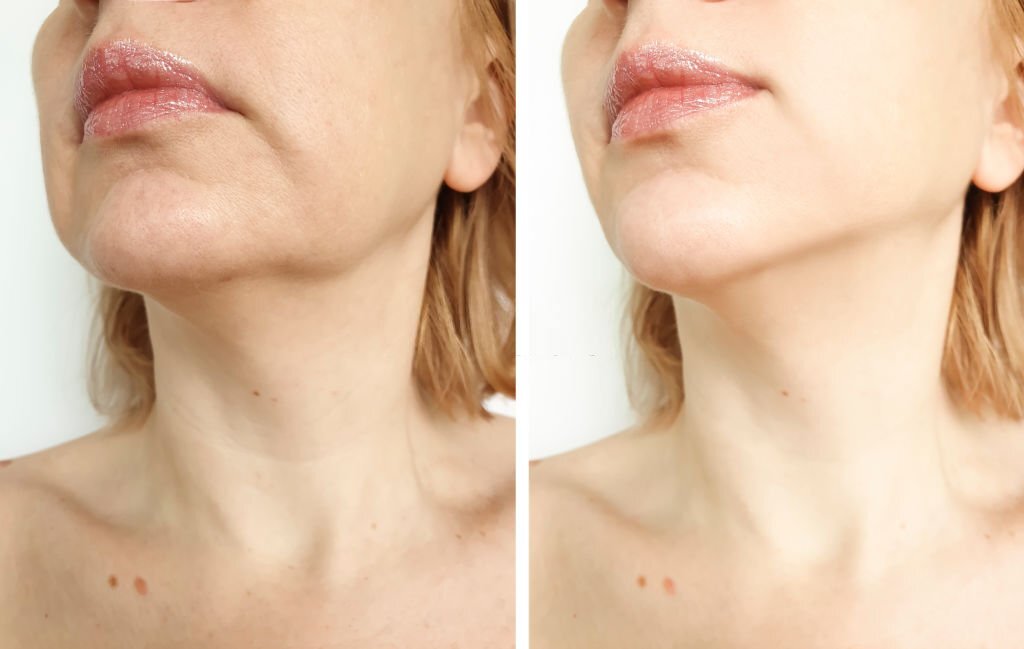Facelift: What You Need to Know
Facelift: A comprehensive guide
A More Youthful Appearance through Facelift Surgery
Facelift surgery (rhytidectomy) is a cosmetic procedure designed to rejuvenate your facial features and enhance your overall appearance.
This highly affective surgical technique addresses significant sagging and deep wrinkles, providing transformative results lasting a decade or more.
Customizable Procedure for Every Patient
Facelift surgery can be tailored to meet each patient’s individual anatomy and aesthetic goals. A skilled plastic surgeon creates a personalized surgical plan to deliver the desired outcome. The procedure involves lifting tissues, tightening underlying muscles, removing excess skin, and re-draping remaining skin results in a more youthful appearance in your face and neck.
Expert Insights
Dr. Prendiville, a facial plastic surgeon in Florida, believes facelift surgery is the cornerstone for facial rejuvenation. According to him, this procedure can provide the most dramatic and long-lasting results for patients who are looking to restore their youthful appearance.
Popular Procedure
Despite its higher price tag and two weeks of downtime, facelift surgery remains a popular choice among plastic surgery procedures. The surgery’s popularity can be attributed to its transformative results in effectively address sagging and deep wrinkles that cannot be treated through non-invasive procedures.
Customizable for Your Needs
Facelift surgery is not a one-size-fits-all procedure. It may be customized to address each patient’s specific concerns. Your surgical plan depends on your unique facial structure, aesthetic goals, and desired outcome. This personalized approach delivers outcomes enhancing your natural features and improving your overall appearance.
Pros and Cons of Facelift Surgery

Like any surgical procedure, it has both advantages and disadvantages to consider before deciding to undergo surgery.
Pros:
- High Patient Satisfaction: Many who have undergone facelift surgery report feeling and looking younger. Dramatic transformations seen in facelift before and after photos boost self-confidence for many.
- Natural-Looking Results: Modern surgical techniques used in facelift surgery aid in natural looking results. The surgery lifts skin and also underlying facial muscles, creating a more natural-looking appearance.
- Scar Minimization: Scars are generally undetectable once fully healed when performed by an experienced surgeon.
- Long-Lasting Results: Decade lasting results of facelift surgery make it a worthwhile investment for those seeking long-term rejuvenation.
Cons:
- Limited Scope: Facelift surgery does not include the eyelids or brow. Patients seeking this work must undergo additional cosmetic surgery procedures.
- Inability to Address Specific Concerns: Facelift surgery does not address fine lines, crepey skin, volume loss, hyperpigmentation, or other sun-related damage or poor elasticity. Skin rejuvenation treatments, such as laser resurfacing, dermal fillers, or fat grafting, may be required to address these concerns.
- Potential Complications: As with any surgery, potential complications associated with facelift surgery, include bleeding, infection, scarring, hematoma, and facial nerve injury, resulting in muscle weakness or paralysis.
- Possible Asymmetries and Deformities: There is also a risk of asymmetries, deformities, and underwhelming outcomes.
- Recovery Time and Cost: Facelift surgery requires a minimum of two weeks of downtime, and in the U.S. it’s an expensive procedure not covered by insurance.
Costs of a Facelift

Facelift surgery’s dramatic long-lasting results comes with a hefty price tag.
The average cost of a facelift in the U.S. is $8,005 to $22,100, with some well-known plastic surgeons charging prices into the six-figures.
Note: Facelift costs vary widely, depending on extent of the procedure, surgeon’s training, experience, and location.
During your initial consultation, ask your surgeon for a full cost breakdown in addition to their fee. Include the operating room or hospital access, anesthesia, additional medical appointments, pain medication, and at-home care supplies post procedure.
This is an elective cosmetic procedure, and therefore not covered by insurance. Likewise, plan for all costs involved and ensure it’s within your budget.
Cost to include
Count on the following items.
- The consultation
- Surgeon’s fee
- Surgical facility
- Anesthesia fees
- Surgical supplies
- Prescription medications
- Recovery supplies
- Pre- and post-operative appointment fees
What Affects the Cost of Facelift?
Several factors influence the cost of facelift, including:
- Surgeon’s qualifications and experience level.
- Procedure complexity.
- Type of anesthesia.
- Complementary procedures.
- Insurance Coverage.
- Where your surgery takes place.
Let's take a closer look at each of these factors.
The best facelift surgeons are artists. Pay special attention to a surgeons’ credentials, patient reviews, and “before” and “after” galleries.
What percentage of their practice is devoted to facelifts? If they don’t perform at least 100 facelifts a year, we don’t recommend working with them.
The type of anesthesia used during the facelift procedure impacts cost. Most doctors perform facelift procedures using general anesthesia, which cost considerably more than local anesthesia.
General anesthesia has some key benefits, including being fully unconscious and closely monitoring breathing and blood pressure throughout surgery.
The medical professional administering your anesthesia impacts facelift costs. An anesthesiologist (a medical doctor) charges higher fees than a certified registered nurse anesthetist (CRNA). While both are qualified to administer anesthesia, anesthesiologists have more advanced training and some surgeons insist on using them.
Traveling Abroad Benefits

Looking for a cost-effective way to undergo a facelift?
Traveling abroad may be the perfect solution. In the U.S., Facelifts are expensive, making it challenging for most of us to afford.
Why Turkey is an Attractive Destination for Facelift Surgery
Turkey has emerged as a popular destination for facelift surgery, offering quality treatment at affordable prices.
Facelift Surgery costs $20,000-$70,000 in New York City, while this same treatment cost only $2,500 – $4,000 in Istanbul.
Here’s why Turkey is a top destination for facelift surgery.
- Turkey has a long history of practicing medicine, with highly trained and experienced medical professionals, translating into a high standard of care.
- Facelift surgery in Turkey cost significantly less than the same procedure in the US, UK and Australia. Save up to 70%, without compromising quality.
- Turkey’s rich history, offers patients a chance to combine surgery with a holiday.
Istanbul is a mecca for cosmetic surgeries due to its affordability, highly professional and developed industry designed to service the world’s cosmetic surgery needs.
Why plastic surgery is much cheaper in Turkey:
- Lower Operating Costs: Rent, utilities, and supplies, are much lower in Istanbul.
- Lower Labor Costs for medical professionals and operating room staff.
- Lower Marketing and Advertising Costs: Lower spend results in lower prices.
- Lower Malpractice Insurance Costs keep plastic surgery costs down.
- Fierce Competition among plastic surgeons in Istanbul, results in improved skill set and lower prices.
- Favorable exchange Rate: Each US dollar or Euro exchanges for 20 Turkish Lira.
Choosing a Surgeon in Turkey
When considering Turkey for your facelift, choose a reputable and experienced surgeon. One way to ensure this is by looking for certifications from reputable organizations:
Research the surgeon’s experience, qualifications, and reviews from previous patients.
Best Age for a Facelift

As we age, our skin loses elasticity—wrinkles, fine lines, and sagging skin appear. A facelift helps restore a more youthful appearance.
But what’s the best age to have this procedure done? Is there a sweet spot where you’ll get the most benefit?
Ideal Age Range for a Facelift
The optimal age range for a facelift is typically between the ages of 40 and 60.
However, there’s no hard and fast rule, and the decision to have a facelift ultimately depends on the individual. Some notice aging signs in their 30s and are likewise candidates. Others may not develop signs until their 60s.
The ideal facelift patient is someone with visible aging signs in the following areas:
- Descent of cheeks
- Jowls and marionette lines
- Face and neck laxity
- Neck banding
Are you bothered by these signs of aging?
Maybe it’s time to do something about it?
Types of Facelifts

Each type of facelift has its own approach and intended results.
- SMAS Facelift involves tightening the SMAS layer—tissue beneath the skin containing the facial muscles. Incisions are made in front of and behind the ears, and excess skin is removed.
- Deep Plane Facelift: Reposition muscles and deeper face tissues, resulting in a more natural-looking outcome. Incisions for a deep plane facelift are similar to those used in an SMAS facelift.
- Mid-Facelift focuses on the middle third of the face, including cheeks and lower eyelids. It involves lifting and repositioning the deeper facial tissues through small hairline incisions.
- Thread Lift: A non-surgical facelift using sutures or threads placed under the skin to lift and tighten facial tissues. The threads are anchored to underlying tissues and the skin is pulled taut, resulting in a more youthful appearance.
- Mini Facelift: A less invasive facelift involving smaller incisions and a shorter recovery time. It is typically used for patients with mild to moderate signs of aging and involves the lifting and tightening of the lower face and neck.
Consult with a board-certified plastic surgeon who can help you determine the best approach to achieve your desired outcome.
How It Works

Surgery is typically performed in an outpatient facility under general anesthesia or local anesthesia using IV sedation.
Before surgery: A mix of lidocaine, epinephrine, and tranexamic acid is injected into the face to numb area and minimize bruising.
For a SMAS lift: incisions are made in front of and behind the ears.
- Skin and fatty tissue are separated from the SMAS before lifting the muscles, securing them with sutures, and re-draping skin.
- Excess skin is trimmed away and the incisions are closed with tiny stitches.
Deep plane lift: Surgeon creates a flap including skin, fat, and SMAS.
- All are lifted and repositioned as one unit.
- The muscular structure of the neck is also lifted and supported.
- Tension-bearing sutures are placed in the SMAS layer.
After surgery: Patient is discharged with face and head bandages and possibly a drainage tube. Surgeon may request keeping patient overnight for post-op care.
Anticipate being very groggy, so it’s crucial to have a trusted friend, partner, or family member take you home and monitor you for at least the first night.
Full Facelift vs. Lower Facelift and Neck Lifts

A full facelift targets sagging in the mid-face, jowl, and neck, whereas a lower facelift focuses primarily on the jawline and neck.
The incision locations are similar, but a lower facelift may tighten only the platysma, or neck muscles, rather than the entire SMAS layer.
A lower facelift is designed for younger patients with early aging of the lower face.
Does a Facelift Include the Neck?
Yes. Typically, facelift surgery includes a neck lift as well.
The surgeon elevates the skin off the neck platysma muscle and tightens the muscle. The neck platysma is an extension of the SMAS layer in the face.
The platysma can usually be accessed through the same facelift incision sites behind the ear, but sometimes an incision under the chin is necessary—especially in the case of severe skin laxity and platysmal banding (muscle protrudes as two vertical bands running the neck length).
To correct platysmal banding, the surgeon may cut and suture the muscle through a small incision under the chin.
Excess fat under the chin can also be removed with liposuction using the same incision. Through this submental incision, surgeons may remove deep fat from behind the platysma muscle for more dramatic contouring.
Recovery

Facelift surgery is a major procedure requiring significant recovery time. Here’s a detailed breakdown of the recovery process:
Day 1:
- Wake up in recovery room post-surgery, feeling groggy and uncomfortable.
- Nurse monitors your vital signs, ensuring you are doing well.
- Pain, swelling, and bruising are common.
- Pain medication will be administered as needed.
- Detailed recovery instructions will be given.
Day 2:
- Follow-up appointment with your surgeon.
- Surgical dressings removed.
- Surgeon will evaluate facelift incisions, bruising, and swelling.
- Any drains placed during surgery to prevent fluid buildup will be removed.
- Fresh bandages will be applied, depending on how you’re healing.
- Bathe 1 day following surgery. Avoid getting your head wet.
Days 3-4:
- Bruising and swelling are typically at their maximum.
- Only take prescribed pain medication, not aspirin or other painkillers.
Days 3-5:
- Follow-up appointment with surgeon by day five.
- Remaining bandages will be removed.
- Removable elastic strap is provided to wear for support.
- Cleaning facelift incisions using saline and apply Vaseline or Aquaphor.
- Gently wash hair with baby shampoo in warm water to remove dried blood, surgical soap, and normal residue without disturbing staples or sutures.
- Avoid letting shower water hit your face.
- Skip any regular skin-care regimen until surgeon gives you the green light.
Days 7-10:
- Stitches and sutures will be removed.
- Return to work is possible. Many wait two-weeks and reduced swelling.
- No bending over, lifting, or bumping head, face, or neck (may cause bleeding).
Day 14:
- Resume side sleeping but not on your stomach until doctor allows.
Day 30:
- Back to your regular routine.
- Avoid elevating heart rate for four weeks. No cardio and weight lifting
- Walking’s good.
Months 3-4:
- Stay out of sun and apply sunscreen with a high SPF.
- Minor swelling, bruising, tightness.
- Some numbness may be present for up to a year.
Anticipate several months passing for results to become apparent. Follow your surgeon’s instructions carefully. Take it easy during recovery to ensure the best possible outcome.
Risks: Complications from Facelift Surgery

As with any surgical procedure, facelift surgery carries some risks. Let’s take a closer look at the potential facelift surgery complications and how to best minimize them.
Complication Rate
According to a 2015 study, the complication rate for facelift surgery is around 1.8%. However, significant variation among surgeons makes it difficult to determine the precise complication risk. The study analyzed 11,300 facelifts performed between 2008 and 2013, without focusing on any one particular style or surgeon.
Common Complications
- Hematoma: A hematoma, or a collection of blood under the skin, is the most common potential complication noted in the study, occurring in around 1.1% of cases. This occurs due to excessive activity during healing or elevated blood pressure. Hematoma requires your surgeon to drain blood using a syringe.
- Infection: Infection is the second most common complication, occurring in 0.3% of cases. You can minimize infection risk by keeping your incisions clean.
- Bleeding: Some degree of bleeding is normal after any surgical procedure, especially if you cough, sneeze, or strain yourself in any way. However, if you experience significant bleeding, contact your surgeon immediately.
- Facial Nerve Injury: While facial nerve injury is possible, the chance is extremely low, and it’s typically not permanent. According to Florida, plastic surgeon Dr. Perez, facial nerve palsy and facial muscle weakness following a facelift are almost always temporary, with full recovery within three to six months.
Minimizing Risks
While there is no way to completely eliminate facelift surgery risk, steps may be taken to minimize them.
Choosing a qualified, experienced surgeon, specializing in facelift procedures is the greatest risk minimizer.
Follow your surgeon’s pre- and post-operative instructions carefully
- Keeping incisions clean.
- Avoiding activities that could cause excessive bleeding or hematoma.
- Any unusual symptoms or complications, contact your surgeon right away.
How Long Do the Effects of a Facelift Last?

Results very depending on several factors. In general, expect your facelift results to last for 10 years or more.
While a facelift can effectively turn back the clock, the natural aging process continues. Over time, aging signs continue to accrue. Consistent skin care is the most effective means of extending facelift results.
A gentle cleanser and moisturizer, a vitamin C serum, and a nightly retinoid all help in safeguarding skin health and elasticity, which helps prolong the effects of your facelift.
Here are other lifestyle factors to help maintain your results and contribute to healthy, youthful-looking skin:
- Wear sunscreen
- Eat a healthy diet
- Adequate sleep
- Minimize stress
Taking care of yourself, inside and out, helps to ensure your facelift results last as long as possible.
Facelift surgery is a highly effective cosmetic procedure that can deliver transformative results by addressing sagging skin and deep wrinkles.
This procedure can be tailored to meet the unique needs and goals of each patient, making it a customizable and personalized solution for facial rejuvenation.
While seeking treatment in the US is expensive, it doesn’t have to be abroad.
Sources & studies
Get A Quote
Book an Appointment
Reviews
They recommended a crown and put it in without complications. They charged me exactly what they said they would and did not insist on trying to sell me another treatment, like so many dentists in the U.S. do…I’m sorry but it so true.
I will definitely be back! Thank you Hebedoc!
That's service and priority to someone in pain. Dr. Diaz took the proper conservative and cost- effective pathway to eliminating my pain and discomfort. So thankful to find such dedication and quality. Very good people, very helpful, doing good work!
Thank you for what you do and how you do it, superior patent care exits and is flourishing with the entire team. Highly recommended traveling to Tijuana. I’ve come to think of it as visiting the south side of San Diego, it’s that close!
Will definitely recommend, 10/10
